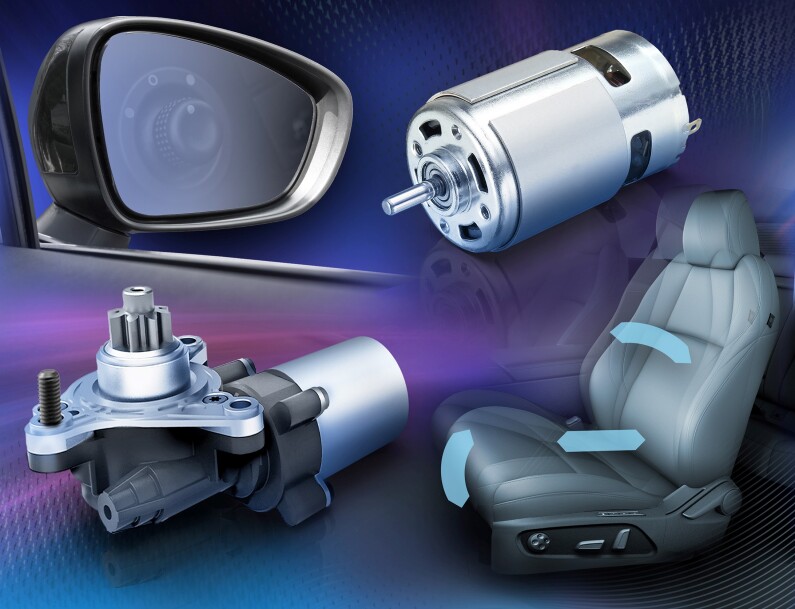Brushed Motors Are Not Going Away

By: Isaac Sibson, Automotive Applications Engineer
Even when not taking into account the electrification of the drivetrain, the number of electric motors in the average car is increasing significantly. Many functions like pumps and compressors are moving away from being driven mechanically by the crankshaft to being driven by electric motors. From a cabin-comfort standpoint, we find motors driving things like seats, door mirrors, windows, and steering wheel positioning.
The basic level of expected specifications in a car continues to grow. In current-day Europe and North America, it is difficult to buy a car with manually adjusted door mirrors or hand-wound windows. Electric windows and door mirrors have become a basic and expected specification item for even the lowest-cost car on the market. Twenty years ago, a mid-level executive car came with manual seats in a base specification; while now, even the lowest trim level benefits from electric seating adjustments.
Within the electronics and semiconductor industries, there is a lot written about the myriad benefits of brushless DC (BLDC) motors: smoothness, efficiency, longevity, etc. These things are certainly true and do offer significant benefits in some applications. However, brushed motors feature unique benefits as well; they offer low costs and are easy to implement and control. There are many applications within a vehicle where the brushed motor is a better fit for capability and cost than the brushless motor.
Let’s take the door mirror adjustments as an example. There are two motors in the mirror to drive it up/down and left/right. When you first buy a car, you might spend a week or two occasionally adjusting the mirrors to get them just right, and then generally they are left alone. Maybe the car has a tilt function to show the curb when you put it into reverse—but even then, how long is that motor going to be in use?
If we estimate 20 seconds per day, then over the course of a year the motor is used for about 2 hours cumulatively. Keep using the car for 10 years and we reach 20 hours of operation.
Within the expected lifetime of a vehicle, some of these adjustment motors will be rarely used, with just a few hours of operation each. The extra cost of a brushless motor isn’t justified in these applications where longevity isn’t an issue. In contrast, it certainly is justified for a pump or fan that runs constantly in an active car, which quickly racks up thousands of hours of operation.
This also applies to the efficiency. A brushless motor is more efficient than a brushed motor, but when we consider a motor using a few milliamps for a few seconds a day, with a few hours over the life of the vehicle, then the energy difference becomes irrelevant. For 20 seconds of a 20W brushed motor, where a 15W brushless motor could do the same job, there is a difference of 0.027Wh of energy. This is lost in noise for even the most efficient EV.
Brushed motors currently, and will continue to, provide a more cost-effective solution to many applications where lifetime and efficiency are not limiting factors. To support these motors, Diodes Incorporated has a wide portfolio of high-performance drivers. Housed in a compact SO-8 package, the DMHC4035LSDQ is a complementary MOSFET H-Bridge driver that features a dual N-Channel and dual P-Channel arrangement. Qualified to AEC-Q101, it can be used for driving brushed DC motors in a wide variety of automotive applications. It is 40V rated, with both low on-resistance and low input capacitance characteristics. Further information on this MOSFET H-Bridge driver can be found here: https://www.diodes.com/part/DMHC4035LSDQ/
